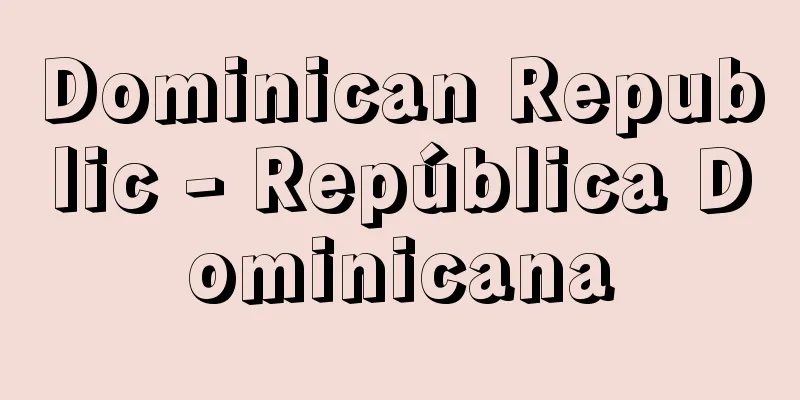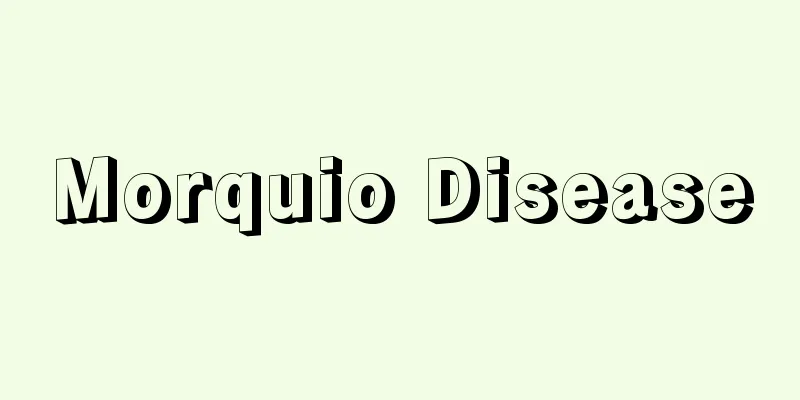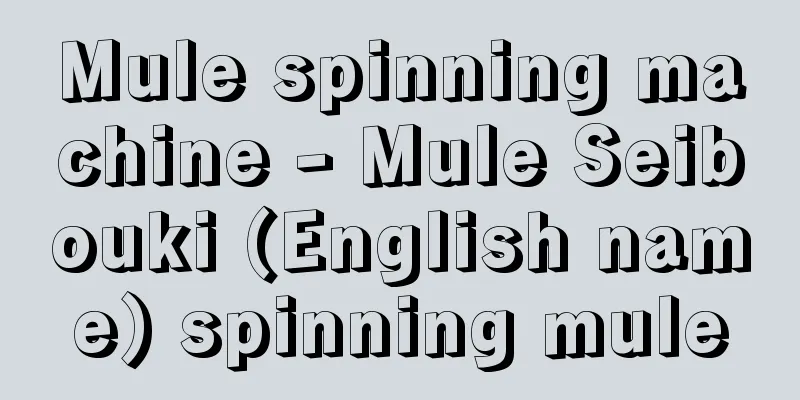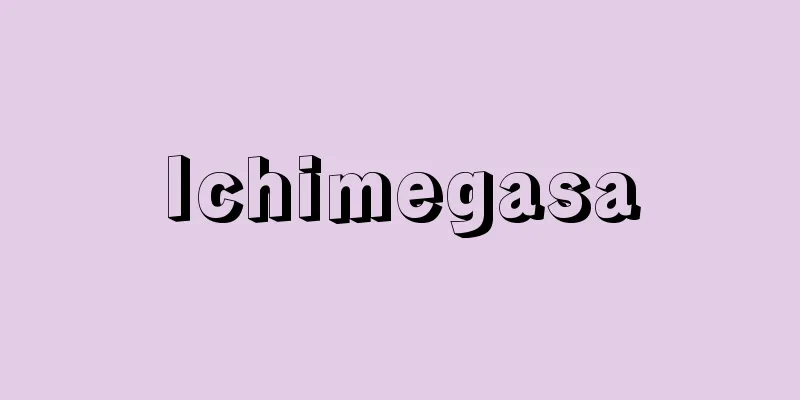Dominican Republic - República Dominicana

|
It is a subtropical country located in the Greater Antilles, which surrounds the northern part of the Caribbean Sea, and occupies two-thirds of the eastern part of Hispaniola, the second largest island after Cuba. The island has a complex, mountainous topography with many undulating hills, and shares a mountainous border with Haiti, which occupies the western third of the island. The country has an area of 48,442 square kilometers, roughly the size of Kyushu and Kochi Prefecture combined, with a population of 9.354 million (2006 estimate) and 10.02 million (2011 estimate). The population of the metropolitan area, centered on the capital, Santo Domingo, is approximately 2 million (2010 estimate). [Kunimoto Iyo] NatureThe topography of Hispaniola, formed by the uplift of the seabed, is extremely complex, consisting of steep mountain ranges and mountainous areas, intermountain basins and river valleys that spread between them, mountain ranges that approach the coast and narrow coastal plains along them, and an open eastern plain. The mountainous area occupies about three-quarters of the island, and the Central Mountain Range, which runs from northwest to southeast, reaches the center of the country on the Dominican side, with the highest peak in Hispaniola, Mount Duarte (3,175 meters above sea level), rising above it. Parallel to this Central Mountain Range, the Northern Mountain Range runs to the north, and the Neiva Mountain Range and the Baoruco Mountain Range run to the south. Finally, the Oriental Mountain Range is located in the northeast of the country, and both mountain ranges run from northwest to southeast. The Cibao Plain along the Yaque del Norte River and the Vega Real Plain along the Yuna River, located between the Central Mountain Range and the Northern Mountain Range, are fertile agricultural areas. Lake Enriquillo, located in the fault valley between the Neiva and Baoruco mountain ranges in the southwest, is a salt lake 46 meters below sea level. The Ceibo Plain in the southeast of the island is the largest flat land in Hispaniola, with many rivers running north to south and sugar cane fields and cattle ranches spreading out. The climate is subtropical oceanic, but due to the many mountains and varied topography, some areas have a humid, rainy climate and others have arid zones. However, trade winds generally blow from the northwest in winter and from the southeast in summer, resulting in a bearable average annual temperature of 26-30°C. The year is divided into rainy and dry seasons, with the rainy season in the north from December to April and in the south from May to November. The average annual precipitation is 1,400 mm, but exceeds 3,000 mm on the southern slopes of the central mountain range, where the precipitation is the highest. In general, precipitation is high in the northeast, but on the other hand, the areas in the shadow of the trade winds and the northwest have a dry climate of less than 500 mm, and the grasslands are dotted with shrubs typical of the savanna, making irrigation essential for agriculture. Tropical cyclones and hurricanes strike the country from August to October, causing great damage. In 1930, a hurricane caused devastating damage to the capital, Santo Domingo, and other areas, and heavy rains in May 2004 caused floods and landslides, resulting in many deaths. [Kunimoto Iyo] historyHispaniola is the first island in the Western Hemisphere where Columbus arrived on his first voyage in December 1492, and where the Spanish first began their colonization. Nueva Isabela, the predecessor of Santo Domingo, was founded in 1496 by Columbus's brother Bartolomé Colon, and became the base for Spanish colonial management in the "New World" until the Spanish shifted their attention to Mexico and Peru on the continent. However, it also marked the beginning of a tragic history for the indigenous people (the Arawaks and the Caribs). The Spaniards who came to this area in search of El Dorado (the land of gold) exploited the indigenous people as laborers for gold mines (in the Cibao gold mine area) and plantations, and in addition, due to malnutrition and unprecedented epidemics brought from Europe, the indigenous population, estimated at hundreds of thousands to one million, dropped sharply in the first half century. After the gold was depleted, sugarcane plantations were opened around Santo Domingo in the early 16th century, and black slaves began to be imported from Africa to replace the drastically reduced indigenous population. However, it was constantly subject to attacks by pirates from European countries aiming for the treasure of the Spanish colony, and the west side of the island became the French colony of Saint-Domingue in the Treaty of Rijswijk in 1697, and in 1795, Spain ceded the sovereignty of the eastern part to France. Later, in 1804, Saint-Domingue became the first independent country in Latin America, changing its name to Haiti and taking control of the entire island. Santo Domingo, a former Spanish colony, resisted and declared independence in 1821, but was conquered by Haiti the following year in 1822, and the period of Haitian occupation continued for 22 years. In 1844, the country achieved independence from Haiti through an independence movement led by founding heroes F. Rosario, R. Meja, and J.P. Duarte, but was annexed by Spain in 1861 and regained independence in 1865. However, even after this independence, the country continued to face serious problems such as dictatorship, political turmoil, financial difficulties, and accumulated debts from Western countries. In 1905, the United States, fearing military intervention from European creditor countries, took over the control of customs collection and adjustment of debt repayments on behalf of the Dominican Republic government, effectively making it an American protectorate. Furthermore, the United States, concerned about the influence of Germany during World War I and the chaotic domestic politics, sent Marines to restore domestic order in 1916 and continued military occupation until 1924. R. L. Trujillo, who served as commander of the National Guard established following the withdrawal of US troops, became president in 1930, and the Trujillo family maintained a dictatorial system until his assassination in 1961. A certain degree of economic growth and social development took place under the political stability during this time, but as is known for renaming the capital, Santo Domingo, to Trujillo, and changing the country's highest peak, Mount Duarte, to Mount Trujillo, this typical dictatorial system based on a personality cult also led to the accumulation of social discontent through thorough oppression of anti-government forces, subordination to American capital, and the concentration of wealth in the hands of the Trujillo family. In 1959, a Dominican revolutionary guerrilla force that invaded from Cuba shortly after the revolution failed and was annihilated, and Trujillo ordered the assassination of Venezuelan President Rómulo Betancourt. This led to a growing anti-Trujillo movement, with the General Assembly of the Organization of American States (OAS) passing a resolution condemning Trujillo as dictator in 1960, and leading to his assassination in 1961. Juan Bosch of the left-wing Dominican Revolutionary Party (PRD), who came to power in the presidential election of 1962, enacted a new constitution in 1962 and embarked on a series of reforms, including land reform. However, a coup by forces opposed to the reformists and the military led to Bosch being exiled from the country, and political instability escalated into civil war in 1965. In response to this situation, the United States, fearing that the Dominican Republic would become a second socialist country, Cuba, sent troops and attempted to restore order with the stationing of peace troops from the Organization of American States. Joaquín Balaguer was elected president in 1966 and held power for three terms, 12 years, until 1978. Although he worked on economic and social reform and democratization, he built a political and economic structure that was strongly anti-communist and dependent on the United States, and was subsequently elected president in 1986, 1990, and 1994. These elections were accused of fraud, but he retired after two years of his final term due to his advanced age of 88 and poor eyesight. As a result, the presidential election held in 1996 went into a runoff vote, but L. Fernández of the center-left Dominican Liberation Party (PLD) was elected president. Since then, the Dominican Revolutionary Party (PRD) won a landslide victory in both houses of Congress in the 1998 general election, and elected H. Mejía in the 2000 presidential election. In the 2004 presidential election, former PLD president Fernández, who took a center-left line, returned to power, and the PLD also won a landslide victory in the 2006 general election. Fernández was also elected again in the 2008 presidential election. In this way, since 1996, the two major parties (PLD and PRD) have taken turns in power. [Kunimoto Iyo] Politics and DiplomacyThe political system is a republic, and the head of state is the president, who is elected by direct popular vote. The term of office is four years. A constitutional amendment in 2009 prohibited consecutive reelections. The parliament is bicameral, with a 32-seat senate, one member elected from each of the 31 departments and the capital, and a 150-seat lower house, both of which serve four-year terms. There are two major political parties, the Dominican Liberation Party (PLD) and the Dominican Revolutionary Party (PRD), as well as the Christian Social Reform Party (PRSC). Due to historical reasons, Cuba's diplomatic stance is based on close diplomacy with the United States, and it also places importance on cooperative relations with the European Union (EU). However, it also maintains diplomatic relations with Taiwan, and in 2007 established diplomatic relations with North Korea. Since the Balaguer administration, Cuba has been known to have been relatively tolerant of accepting political asylum seekers out of humanitarian considerations, and President Fernández visited Cuba in 2009, demonstrating a diplomatic stance that is not entirely pro-American. However, relations with neighboring Haiti are complicated due to border issues, including the problem of Haitians staying illegally. A 2009 constitutional amendment included a provision that would not recognize the nationality of children of illegal immigrants. [Kunimoto Iyo] economyThe main industries are agriculture, tourism, and light manufacturing, but agriculture, which traditionally accounted for almost half of the workforce and total exports, with coffee, sugar, cacao, bananas, tobacco, and other products as its main exports, has changed rapidly since the 1990s. The share of the agriculture, forestry, and fisheries sector in the gross domestic product (GDP) fell from 33% in 1960 to 17% in 1990, and to 6% in 2010, and traditional agricultural products such as sugar, coffee, cocoa, and tobacco, which once accounted for nearly half of total exports, fell to less than 10% of total exports in 2010. On the other hand, exports of mineral resources, which the country is relatively blessed with, have increased in recent years, and gold, silver, copper, and nickel are beginning to become important export products. In addition, the tourism industry, which is being developed by foreign capital, and foreign companies in bonded processing zones (areas where products can be processed and manufactured without paying tariffs and shipped back to foreign countries) are important sources of foreign currency. According to statistics from 2009, 56% of imports were from the United States, and 23% from Venezuela, but exports were to the United States, which ranked first with 13%, and the country was not dependent on any particular country. Liberal economic policies since the 1990s have expanded exports of light industrial products such as textiles produced in bonded processing zones, and in March 2007 the United States-Central America and the Dominican Republic Free Trade Agreement came into effect, with the proportion of industry in the country's industrial structure reaching 32% of GDP in 2010. The currency is the peso (DOP). [Kunimoto Iyo] Society and CultureThe majority of the population is made up of mixed race people of European (white) and African (black) descent, known as mulattos, with pure Europeans and Africans each making up just over 10 percent, while the remaining minority groups include Arabs, Jews, Asians, and mixed races, making for a multi-ethnic and multi-cultural society. A stratified society with large economic disparities has created a poor class that accounts for half of the population living in extreme poverty, and the number of people migrating to the United States for work exceeds 20% of the total population. Six years of primary education and two years of secondary education are compulsory, and according to statistics from 2010, the average years of schooling is 7.2 years. The literacy rate of the population aged 15 and over was 88.2% (2010). The Autonomous University of Santo Domingo, founded in 1538, is the oldest university in both North and South America. The influence of Spanish culture can be seen in the official language, the Catholic faith of the majority of the population, and the historical buildings of the capital city of Santo Domingo, which is registered as a UNESCO World Heritage Site as the "Colonial City of Santo Domingo" and retains the atmosphere of the colonial era, but American culture has a strong influence in the economy and culture. In particular, baseball, the national sport, has sent talented people to not only the American major leagues but also to the Japanese baseball world. Meanwhile, in music, in addition to traditional meringue, jazz and rock have captured the hearts of the people, creating a unique Dominican culture that combines elements of Spanish, African and American cultures. [Kunimoto Iyo] Relations with JapanJapan and the Dominican Republic established diplomatic relations in 1934. Diplomatic relations were temporarily severed during World War II, but were restored in 1952, making the Dominican Republic one of the few countries that accepted Japanese immigrants after World War II. A relocation agreement was signed with the Japanese government in 1956, during the Trujillo dictatorship, and by 1959, 249 families and 1,319 people had been resettled in the collective settlement. However, due to land issues in the settlement and political instability after the assassination of President Trujillo, many of the immigrants returned to Japan or relocated to Brazil and other countries. Furthermore, this failed Dominican Republic relocation led to a lawsuit filed by 170 immigrants who sought responsibility from the Japanese government, seeking damages of 3.1 billion yen in total from the Japanese government. In 2006, Prime Minister Junichiro Koizumi proposed a settlement of "special lump-sum payment" and made an apology, leading to the plaintiffs withdrawing the lawsuit. As of 2012, a small number of Japanese people and their descendants have formed a Japanese community, which is an important bond between the two countries. In terms of trade relations, imports of industrial products, including automobiles, from Japan far exceed exports to Japan. Japan's aid policy is broad, ranging from funding to human resource training programs. [Kunimoto Iyo] "From Columbus to Castro: History of the Caribbean, 1492-1969 (I, II)" by Eric Williams, translated by Kawakita Minoru (1978, Iwanami Shoten)" ▽ "From the Mediterranean to the Caribbean" by Kamo Yuzo (1996, Heibonsha) [References] | [Supplementary Materials] |"> Dominican Republic flag ©Shogakukan Illustration/Shogakukan Creative "> Dominican Republic Location Map Source: Shogakukan Encyclopedia Nipponica About Encyclopedia Nipponica Information | Legend |
|
カリブ海域の北側をとりまく大アンティル諸島にあり、キューバ島に次いで2番目に大きいイスパニョーラ(エスパニョーラ)島の東側3分の2を占める亜熱帯の国。島全体の、起伏が激しく、山の多い複雑な地形をしていて、島の西側の3分の1を占めるハイチとは山岳地帯で国境を接する。国土の面積は九州全体と高知県を合わせたほどの4万8442平方キロメートルで、人口935万4000(2006年推計)、1002万(2011年推計)が暮らす。首都サント・ドミンゴを中心とする首都圏人口は約200万(2010年推計)である。 [国本伊代] 自然海底が隆起して形成されたイスパニョーラ島の地形は、急峻(きゅうしゅん)な山脈と山地、その間に広がる山間盆地や河谷、海岸に迫った山脈とそれに沿った狭い海岸平地、開けた東部平原地帯からなり、地形は非常に複雑である。島の約4分の3を占める山地では、北西から南東へ走る中央山脈がドミニカ側で国土の中央部にまで達し、イスパニョーラ島の最高峰ドゥアルテ山(標高3175メートル)がそびえている。この中央山脈に並行するようにその北方に北部山脈が、南方にはネイバ山脈とバオルコ山脈が走っている。そして国土の北東部にオリエンタル山脈があり、いずれの山脈も北西から南東へと続く。中央山脈と北部山脈の間に位置するヤケデルノルテ川沿いのシバオ平原とユナ川沿いのベガレアル平原は、肥沃(ひよく)な農業地帯となっている。南西部のネイバ山脈とバオルコ山脈の間の断層谷に位置するエンリキリョ湖は、海面下46メートルの塩湖である。島の南東部のセイボ平原はイスパニョーラ島最大の平地で、多くの河川が南北に流れ、サトウキビ畑と牧場が広がっている。 気候は亜熱帯海洋性気候に属するが、山地が多く、変化に富む地形のために、地域によって湿潤多雨気候から乾燥地帯まで存在する。しかし全般的に冬には北西から、夏には南東からの貿易風が吹き、その影響を受けて年平均気温は26~30℃で、しのぎやすい。1年は雨期と乾期に分かれているが、北部の雨期は12~4月、南部の雨期は5~11月と異なる。年間平均降水量は1400ミリメートルであるが、雨量がもっとも多い中央山脈の南斜面では3000ミリメートルを超える。全般的に降水量は北東部で多いが、他方で貿易風の山かげになる地域や北西部は500ミリメートル以下の乾燥気候で、サバンナ特有の灌木(かんぼく)が点在する草原となっており、農業には灌漑(かんがい)が不可欠である。8月から10月にかけて熱帯低気圧やハリケーンが襲来し、大きな被害を受ける。1930年に首都サント・ドミンゴをはじめとする各地がハリケーンのために潰滅的な被害を受け、2004年5月の豪雨では洪水と土砂崩れで多数の死者を出した。 [国本伊代] 歴史イスパニョーラ島は、1492年12月にコロンブスがその第一次航海で到着した西半球で最初の島であり、スペイン人が最初に植民事業を始めた地である。1496年にコロンブスの弟バルトロメ・コロンが建設したサント・ドミンゴの前身ヌエバ・イサベラは、スペイン人の関心が大陸部のメキシコやペルーに移るまで「新大陸」における植民地経営の拠点となったが、それはまた先住民(アラワク人とカリブ人)にとっては悲劇の歴史の始まりであった。 エル・ドラド(黄金郷)を求めてこの地に渡ってきたスペイン人たちは、砂金採掘(シバオ金山地区)や農園の労働力として先住民を酷使し、加えて栄養失調やヨーロッパからもち込まれた未体験の疫病のために、最初の半世紀間に数十万から100万人とも推定された先住民の人口が激減した。砂金が枯渇したのち、16世紀初めにサトウキビ・プランテーションがサント・ドミンゴの周辺で開かれ、激減した先住民にかわる労働力としてアフリカから黒人奴隷の輸入が始まった。しかしスペイン植民地の財宝をねらうヨーロッパ諸国の海賊によってつねに襲撃の対象となり、島の西側は1697年のライスワイク条約でフランス植民地サン・ドマングとなり、さらに1795年には東側の領有権もスペインはフランスに割譲した。その後、1804年に中南米(ラテンアメリカ)諸国で最初の独立国家なったサン・ドマングは国名をハイチと変え、島全体を支配下に収めた。それに抵抗した旧スペイン領サント・ドミンゴは1821年に独立を宣言したものの、翌1822年ハイチに制圧され、以後22年間ハイチ占領時代が続いた。1844年に建国の英雄F・ロサリオ、R・メジャ、J・P・ドゥアルテらが率いる独立運動によってハイチから独立を達成したが、1861年にスペインに併合され、1865年に再度独立した。しかし、このたびの独立後も独裁政権、政争による混乱、財政の窮乏、欧米諸国から借り入れた債務の累積など深刻な問題を抱え、ヨーロッパ債権国の軍事介入を恐れたアメリカが1905年にドミニカ共和国政府にかわって関税徴収の管理権と債務返済の調整を行うことで、実質的にアメリカの保護国となった。さらに第一次世界大戦中のドイツの影響と混迷する内政を懸念したアメリカは、1916年に国内秩序回復のために海兵隊を派遣して、1924年まで軍事占領を続けた。 アメリカ軍の撤退を契機に設置された国家警備隊の司令官を務めたR・L・トルヒーヨ(トルヒーリョ)が1930年に大統領となり、その後1961年に暗殺されるまでトルヒーヨ一族が独裁体制を保持した。この間の政治的安定の下で一定の経済成長と社会開発が進んだが、首都サント・ドミンゴをトルヒーヨと改名し、国内最高峰のドゥアルテ山をトルヒーヨ山と変更したことで知られるように、典型的な個人崇拝を基調とした独裁体制は、同時に反政府勢力への徹底的な弾圧とアメリカ資本への従属およびトルヒーヨ一族への富の集中などによって、社会的不満を蓄積させた。1959年には革命直後のキューバから侵攻したドミニカ人革命ゲリラ部隊が失敗して殲滅(せんめつ)され、トルヒーヨがベネズエラの大統領ロムロ・ベタンクール暗殺を命じたことから、1960年に米州機構(OAS)の総会で独裁者トルヒーヨへの非難決議が採択されるなど、反トルヒーヨ運動の気運が高まり、1961年にトルヒーヨは暗殺された。 その後の1962年に行われた大統領選挙で政権の座についた左派のドミニカ革命党(PRD)のフアン・ボッシュは、1962年に新憲法を制定して農地改革をはじめとする一連の改革に着手した。しかし改革派に反対する勢力と軍部によるクーデターでボッシュは国外に追放され、政情不安は1965年に内戦へと発展した。この状況に対してドミニカが第二の社会主義国キューバとなることを恐れたアメリカは軍隊を派遣し、米州機構の平和軍の駐屯とともに秩序回復を図った。そして1966年に大統領に選出されたホアキン・バラゲルは、1978年まで3期12年間政権を握り、経済・社会の改革と民主化に取り組んだものの、反共産主義と対米依存の強い政治・経済構造をつくりあげ、その後さらに1986、1990、1994年の大統領選挙で連続当選した。これらの選挙では不正が糾弾されたが、最後の任期は88歳という高齢と目の不自由さなどから2年で引退した。その結果を受けて1996年に実施された大統領選挙は決戦投票にまでもつれ込んだが、中道左派のドミニカ解放党(PLD)のL・フェルナンデスが大統領に選出された。それ以降は、1998年の総選挙でドミニカ革命党(PRD)が上下両院で圧勝したのち、2000年の大統領選挙でもH・メヒアを当選させた。2004年の大統領選挙では中道左派の路線をとるPLDの元大統領フェルナンデスが政権復帰を果たし、2006年の総選挙においてもPLDが圧勝した。さらに2008年の大統領選挙でフェルナンデスは連続当選を果たした。このように1996年以降は二大政党(PLDとPRD)による政権交代が行われている。 [国本伊代] 政治・外交政体は共和体制で、国家元首は国民の直接投票で選出される大統領である。任期は4年。2009年の憲法改正によって連続再選が禁じられている。議会は31県と首都からそれぞれ1名選出される32議席の上院と150議席の下院の二院制で構成され、上下両院とも任期は4年である。政党はドミニカ解放党(PLD)とドミニカ革命党(PRD)の二大政党のほかに、キリスト教社会改革党(PRSC)などがある。 外交姿勢は、歴史的経緯から緊密な対米外交を基軸とし、ヨーロッパ連合(EU)との協調関係も重視しているが、台湾と外交関係を維持しているほか、2007年には北朝鮮と国交を樹立した。バラゲル政権時代以降、人道的配慮から政治亡命者を比較的寛大に受け入れてきたことでも知られ、大統領のフェルナンデスは2009年にキューバを訪問し、親米一辺倒ではない外交姿勢を示している。しかし隣国ハイチとの関係は、ハイチ人の不法滞在問題をはじめ国境問題もあり、複雑である。2009年の憲法改正では、不法滞在者の子供の国籍を認めないことが盛り込まれた。 [国本伊代] 経済主要産業は農業、観光、軽工業であるが、伝統的に労働人口および輸出総額のほぼ半分を占めてきた農業におけるコーヒー、砂糖、カカオ、バナナ、タバコなどを主要輸出産品とする産業構造は1990年代から急速に変化した。農林水産業部門が国内総生産(GDP)に占める割合は、1960年の33%から1990年の17%、2010年には6%にまで低下し、かつて輸出総額の半分近くを占めていた砂糖、コーヒー、ココア、タバコなどの主要な伝統的農産物は2010年には輸出総額の10%以下となった。一方、比較的恵まれた鉱物資源の輸出が近年伸び、金、銀、銅、ニッケルが重要な輸出産品となりはじめている。加えて、外国資本によって開発されている観光産業および保税加工地区(関税を払わずに加工・製造し、外国に積み戻しができる地区)における外国企業が重要な外貨獲得源となっている。2009年の統計でみると、貿易相手国は輸入の56%がアメリカ、23%がベネズエラであったが、輸出は第1位の13%がアメリカ向けで特定の国に依存していなかった。1990年以降の自由主義経済政策によって保税加工地区で生産される繊維などの軽工業製品の輸出が拡大し、2007年3月にはアメリカと中米・ドミニカ共和国自由貿易協定が発効し、産業構造に占める工業の割合は2010年にはGDPの32%に達した。通貨はペソ(DOP)。 [国本伊代] 社会・文化住民の大部分をムラートとよばれるヨーロッパ系人(白人)とアフリカ系人(黒人)の混血が占め、純粋なヨーロッパ系人とアフリカ系人はそれぞれ十数パーセントであり、そのほかにアラブ系、ユダヤ系、アジア系、その混血など、少数ながら多様な人種からなる多民族・多文化社会が成り立っている。経済格差の大きな階層社会は極貧状態で暮らす国民の半数を占める貧困層を出現させ、アメリカへの出稼ぎ移住も総人口の2割を超える。 初等教育6年、中等教育2年が義務教育で、2010年の統計でみると平均就学年数は7.2年。15歳以上の人口の識字率は88.2%(2010)であった。またサント・ドミンゴ自治大学は1538年に創設された南北両アメリカ大陸最古の大学である。スペイン文化の影響は、公用語としてのスペイン語、国民の過半数が信徒であるカトリック信仰、植民地時代の面影を伝えるユネスコの世界遺産に「サント・ドミンゴ植民都市」として登録された首都サント・ドミンゴの歴史的建造物などにみられるが、経済および文化の面ではアメリカ文化の影響が強い。とくに国民的スポーツである野球は、アメリカの大リーグのみならず日本の野球界にも人材を送り出している。一方、音楽にみられるように伝統的なメレンゲに加え、ジャズやロックが人々の心をとらえ、スペイン、アフリカ、アメリカ文化の諸要素が一体となった独特のドミニカ文化をつくりだしている。 [国本伊代] 日本との関係日本とドミニカ共和国は1934年(昭和9)に国交樹立。第二次世界大戦で一時国交を断絶したが、1952年(昭和27)に復活し、ドミニカ共和国は第二次世界大戦後に日本人移民を受け入れた数少ない国の一つとなった。トルヒーヨ独裁政権時代の1956年に日本政府との間で移住協定が締結され、1959年までに249家族1319人が集団移住地に入植した。しかし設定された移住地の土地問題と大統領トルヒーヨの暗殺後の政情不安などから、多数の移住者が日本に帰国するかブラジルなどに転住した。さらにこの失敗に終わったドミニカ共和国移住は日本政府の責任を追及する移住者170名が原告となって日本政府に総額31億円の損害賠償を求める訴訟へと発展した。そして2006年(平成18)の首相小泉純一郎の「特別一時金支給」和解案と謝罪談話によって原告側は訴訟を取り下げた。2012年時点では少数の日本人とその子孫が日系社会を形成しており、両国を結ぶ重要な絆(きずな)となっている。貿易関係では日本からの自動車をはじめとする工業製品の輸入が日本への輸出を大幅に超えている。日本の援助政策は資金供与から人材の研修プログラムまで幅広く実施されている。 [国本伊代] 『エリック・ウィリアムズ著、川北稔訳『コロンブスからカストロまで――カリブ海域史、1492~1969(Ⅰ、Ⅱ)』(1978・岩波書店)』▽『加茂雄三著『地中海からカリブ海へ』(1996・平凡社)』 [参照項目] | [補完資料] |"> ドミニカ共和国の国旗 ©Shogakukan 作図/小学館クリエイティブ"> ドミニカ共和国位置図 出典 小学館 日本大百科全書(ニッポニカ)日本大百科全書(ニッポニカ)について 情報 | 凡例 |
Recommend
Wendigo - Wendigo
...There are also many examples of monsters that ...
Maintainability
…In reliability engineering, the quantitative mea...
Tosk
...In addition to Albania itself, there are a few...
Waseda Literature
A literary magazine. It was first published as a ...
Dressmaking - Yosai
An abbreviation for Western sewing. In other word...
Ainu Machine - Ainubata
…Weaving looms also have their own regional chara...
Terephthalic acid
...It is an aromatic dicarboxylic acid with two c...
Echigo Lion (Street Performance) - Echigo Lion
…The name of the Echigo Lion in Edo. It is also c...
Damanhūr (English spelling)
A city in the northwestern part of the Nile Delta ...
Bulky Yarn
Bulky yarn made by utilizing the thermoplasticity ...
Cottage organ
… [Reed Organ] In the mid-19th century, a new typ...
Plantago virginica (English spelling) Plantagovirginica
…[Yoshiharu Iijima]. … *Some of the terminology t...
Lopez, Francisco Solano
Born: July 24, 1827, Asuncion [Died] March 1, 1870...
Gilt Edge
…It is also called gilt edge securities. The name...
chantefable
...The story of Nicolette, a Muslim female slave,...



![Tsunagi [town] - Connecting](/upload/images/67cc3ca5a88cd.webp)





